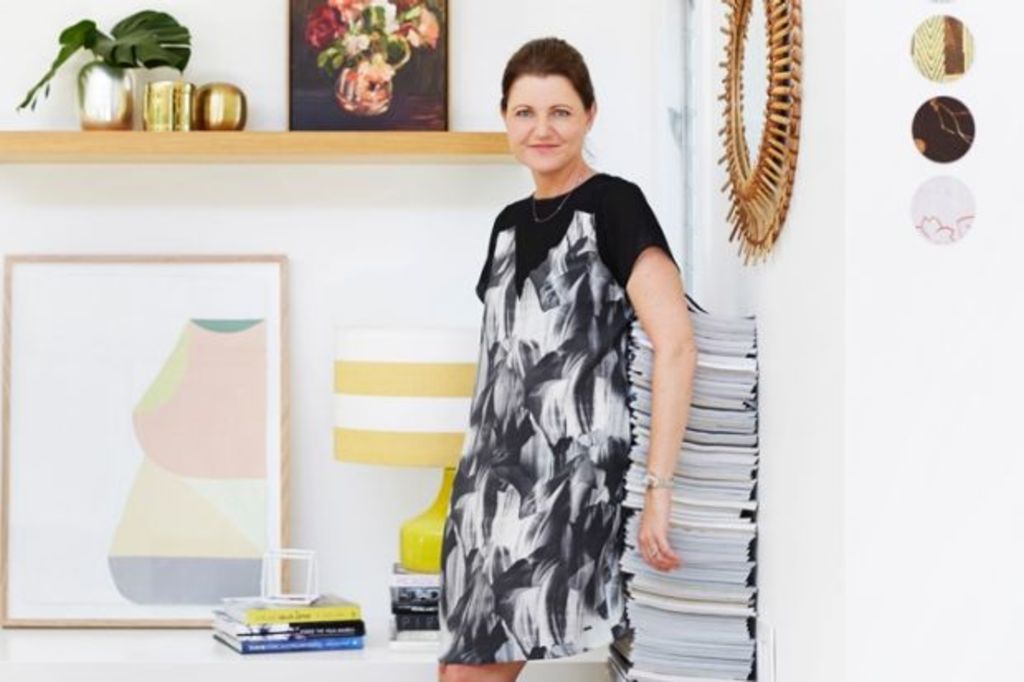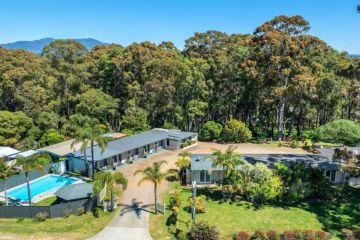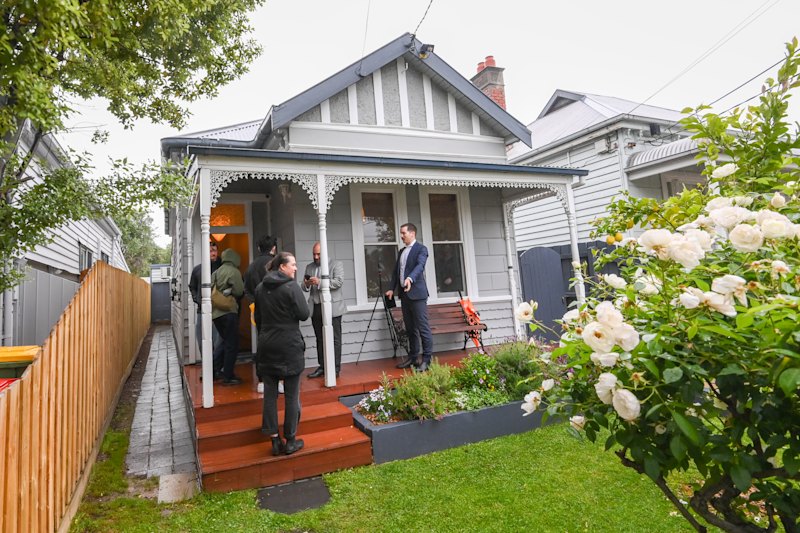To go open plan or not? Experts have their say

Explore The Block in 360 to win
The popularity of open plan living is undeniable. Designed to maximise space in both newly built one-bedroom apartments, renovated period homes and all those in between, open plan living areas have become the “default” layout being implemented in Australian homes.
But with the reported acoustic, smell and privacy issues this design holds, is open plan living really all it is cracked up to be? We asked the experts to weigh in.
Peter Maddison, director of Maddison Architects and host of Grand Designs Australia
I think open plan living is a healthy way to set a house up. It takes away wasted space that would normally occur with the alternative (which is houses with corridors and rooms off corridors), which is a fairly backward way of planning a house.
I think open plan living works well when there’s some flexibility with the space. That is, you’re able to put some subtle dividers through, which creates “implied space”, without floor to ceiling walls. This was invented really in the mid century as a new way of planning a house and it’s very popular today. I have a mid century, 1968 house myself and the whole mid-level is open plan…I think it’s a very good principle to have in place when you’re designing a house.
Acoustics are an issue, so young families who have children asleep may have an acoustic issue with complete open plan…Maybe have open plan in a couple of pavilions rather than one big building so the sleeping zones are a separate structure connected by a link so there can be living, sleeping and flexibility of use.

Simone Haag, designer and stylist
As a personal opinion, I feel open plan living has become an arbitrary item on a checklist of items people think they must have in their homes…Done well, it can be a beautiful way of living, but would I have it in my home? My feeling is no.
Our present home was designed and built in the late ’60s. There is certainly a sense of openness and connectivity, but there are pause points. Rather than opening up to a huge expanse, you walk into an entry zone with a cloak cupboard. A circular plan around this cloak cupboard takes you to the living, kitchen and dining areas. Louvre doors allow you to shut down zones and for me that is beautiful.
My home doesn’t open up on to an outdoor living space, and having little ones, that denies me the ability to be in the kitchen and watch over them in the garden. Instead, I must be out there with them, and in this busy day and age where I usually try and do everything at once, this is actually a really good thing.

Sibella Court, interior stylist at The Society Inc and host of Restoration Australia
I lived in a 2000 square foot (185 square metre) loft in New York City for five years and loved it. It had beautiful light and I could ride my bicycle around it!
The history of a building should determine if it is suited for open plan. Often an addition to an existing structure allows you to have a couple of intimate rooms for bedrooms and reading rooms to have some privacy, and then the additional open plan space.
However, at the end of the day, there are no rules and you can live how and where you want at any age.

Josh and Jenna Densten, founders of Bicker and former contestants on The Block
Personally, we love open plan living as it increases the amount of natural light shared between your rooms. Open plan living can also be a lot easy to design, as there are often less walls and pokey spaces to consider.
We are currently renovating our own house that is all open plan. We have divided the combined areas up with split-levels and glazing.
Although open plan living is about shared living spaces, be sure to zone off the different areas to avoid furniture looking lost in a room…Do this by using large rugs, lighting, split flooring levels, ceiling/wall cladding or central fireplaces.
One of the main overlooked areas in an open plan living area is lighting. Lighting is a really cost effective way to zone off areas. Whether it’s pendants over an island bench or dining table, or floor lamps next to a sofa, layering the lighting at different heights will create a beautiful mood and can also be really practical.

Cherie Barber, founder of Renovating for Profit and presenter on The Living Room
I live in an open plan home, so yes, you could say I’m a fan of open plan living…It means there’s plenty of natural light, and when I’m preparing dinner, I can still engage with whoever’s around, whether it’s my daughter Milan doing her homework or if I’ve got guests over.
I don’t think it’s limited to a certain demographic; it’s about making the space work for you. If you had a family of five in a big, open plan warehouse apartment with only a small balcony, you might find it too noisy. However, a couple would probably find it luxurious to have all that free-flowing space.
Be mindful of which walls you remove or you could create a really disjointed, impractical layout. You need walls to hang artwork, to put your entertainment unit or sofa along, to attach your kitchen wall-hung cabinets to, so make sure you’ve worked all that out before you go taking out walls willy-nilly.

Megan Burns and Christopher Glanville, founders of CM Studio
To date, we have not had a client who has wanted the kitchen, living and dining areas completely separate from each other. I think it is a key feature in the quintessential ideal Sydney lifestyle of indoor/outdoor living. Without a doubt this is how I would design my own home.
We often segment out TV rooms and playrooms for the kids or a study space for adults to work or read and get away. Having these “private” spaces allows the “public” open plan living to be a space for people to come together and often entertain.
Space is at a premium and everyone is always trying to maximise space and light in their renovations or new builds, and having less walls and a more open plan layout allows us to achieve this.

Shaynna Blaze, interior designer, co-host of Selling Houses Australia and judge on The Block
Open plan living created the relaxed and informal living environment we have in our homes today. Having this type of layout led to the connection of the indoor/outdoor living that we also cherish in our homes. I couldn’t imagine not having a home with some sort of open plan aspect to it.
I think it lends itself to all styles of houses, even period houses like Victorian and Californian bungalows adapt well when renovating. Open plan works well with family environments as it encourages communication and gathering in the one main space.
We live large these days, with big TVs, casual entertaining and using the kitchen as the hub of the home, instead of it being tucked away and treated like a service room. Open plan living generally comes with extra natural light flooding into the space and that has a huge effect on the sense of joy you feel when walking into a room.

Sarah-Jane Pyke and Juliette Arent, principals at Arent&Pyke
Open plan layouts are successful for anyone who entertains at home a lot, and are particularly popular with families. Smaller apartments tend to utilise this open plan living set-up well; it is a good opportunity to maximise the useable internal space.
When faced with a small home, the challenge is making sure all zones fit comfortably within open space. In larger homes, the challenge is ensuring the open plan doesn’t feel like a cold, unfilled space, which is uninviting.
Ensure the overall space being transformed into open plan living is big enough to comfortably accommodate all your zones. The worst scenario is when there is an overlap between spaces and your dining room feels to be encroaching on your living space, and your kitchen bench is sometimes your dining table.

Suzanne Gorman, director of Studio Gorman
We almost always incorporate open plan lounge/dining/kitchen spaces into the homes we design. All our clients desire this, especially with a connection to the garden. Many clients now also ask for a small study to be built into the open plan living space too.
It allows a family to be engaged in various activities in different zones but still be able to communicate and generally hang out together. Cooking, eating, reading, kid’s homework, family admin and so on can all take place within earshot so everyone can still communicate, but don’t have to be on top of each other doing the same thing.
Open plan spaces require better heating systems – it’s important not to skimp here so that the large space is comfortable year round. There is also very little sound control or privacy with open plan living, so it is a good idea where planning allows to incorporate another living space where people can retreat to when desired.

Take a look at The Block’s latest dining and living room reveals below.
Carleen and Dan’s living and dining room:



Andy and Ben’s living and dining room:



Julia and Sasha’s living and dining room:



Karlie and Will’s living and dining room:



Kim and Chris’s living and dining room:



We recommend
We thought you might like
States
Capital Cities
Capital Cities - Rentals
Popular Areas
Allhomes
More







